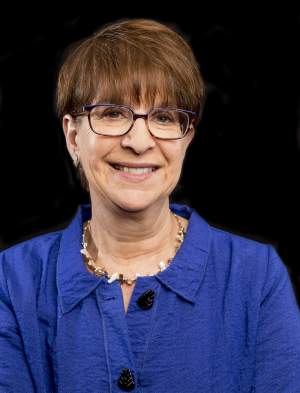Strategic Collaboration: Leveraging Dollars for Impact
The recent great recession that strained philanthropic financial resources and the nonprofit organizations they support, has paved new avenues for collaboration. Today, we are seeing more models (i.e. learning networks, funder syndicates, and venture models), that highlight collaborative funding as an increasingly popular and practical option for funders.
When the Kessler Foundation board refocused its grantmaking program in 2005 on increasing employment opportunities for people with disabilities, program staff needed to explore ways to maximize its small grantmaking budget of $2.5 million in order to influence growth in a meaningful way.
We began in earnest, exploring ways to use collaboration as a means of leveraging our modest funding to gain measurable impact and outcomes. Public/private partnerships and shared funding models became a priority. Accordingly, we sought out innovative pilots or demonstration projects to provide proof of concept. If successful, these programs could be scaled into a larger corporate or public programs to increase employment.
Partnerships imply shared leadership among individuals who are governed by their own organizational culture and values, whether they are in the philanthropic, private or public sectors. However, in collaborative funding, one organization often takes the lead. Partners, therefore, must have trust in one another’s ability to lead efficiently and fairly. Fluid communication, understanding, trust, and goodwill are vital to success. In our experiences, we’ve found that when all partners share a stake in a project, which often means “checking egos,” success is much more likely. For example, it is common practice for partners to share opportunities for speaking engagements and media placements. Setting egos aside to share the front stage is a gesture of mutual respect that will engender a healthier relationship long-term.
Kessler Foundation’s participation in a pooled fund initiative, NYC: ATWORK, began with a partnership initiated by the Poses Family Foundation. This project began as a collaborative idea between New York City’s Mayor’s Office of People with Disabilities (MOPD) and Poses Family Foundation’s Workplace Initiative, to connect people with disabilities to living wage jobs in high-growth industries across the city’s five boroughs, in both the public and private sectors. The goal was to engage 2,000 New Yorkers with disabilities and develop 1,500 jobs over three years. The decision to include other partners was based on what was deemed best for the project. Everyone agreed that adding seats at the table meant broader expertise, more money, and stronger momentum. Is the whole truly greater than the sum of its parts? For us, it was. The project grew to include not only multiple funders, but also business, educational, and public workforce partners, who collectively recognized collaboration as a strategy for finding good job candidates and narrowing the employment gap for people with disabilities.
To achieve the project’s objectives, MOPD built—and acts as an intermediary for—coalitions on both the supply and demand sides of NYC’s labor market. On the supply end, MOPD built a “talent coalition,” which comprises high schools, public and private colleges, community-based organizations, workforce development agencies, and ACCES-VR provider agencies. On the demand end, MOPD created a “business coalition,” leveraging existing relationships with its Business Development Council to target efforts toward employers with the greatest commitment and capacity for inclusive hiring. MOPD’s “business coalition” now includes companies in the city’s high growth-industries, including Jet Blue Airline, CVS, Uniqlo, Standard Chartered Bank, BNP Paribas, and New York City government. In this model, funders maintain verbal agreements over their funding commitments to this project, with a traditional, formal contract between the funder and grantee (MOPD).
As evidenced, funders can organize mission-centric coalitions, and through them drive advocacy, education, and initiatives. By leveraging the strength of Poses Family Foundation’s city and community partners, as well as the networks and coalitions of MOPD, the project accomplished double-bottom-line objectives around targeted capacity building and community improvement. The beauty of this approach is that it increases opportunities to leverage resources and aids for the development of a learning network, where partners can share valuable information and systematic solutions. Having participated in several collaboratives, I can foresee the potential impact of shared funding on improving employment outcomes for people with disabilities. When collaborations succeed, projects certainly have a greater impact. The collective effects of collaborative projects can move the needle on employment on the national level.
The Future
Looking at the past few years, public/private partnerships represent a welcome shift in the business of grantmaking. Despite these advances, however, many programs still depend on unidimensional models that fail to produce perceptible change. Put simply, the sector needs more: more drivers; more partnerships; more visionaries; more risk-takers. Strategic grantmaking means a deliberate, perhaps uncomfortable shift to the application of field information, imagination, and initiation. Strategies must support transformative, self-sustaining models that spur new opportunities to leverage investments and broaden the scope of impact. More philanthropic institutions need to recognize the value of pooling commitments, time, and resources with like-minded funders. The traditional circumscribed approaches to funding employment initiatives must give way to broad-based collaborative efforts capable of achieving results on a much larger scale. By leveraging the strength of funders and its collaborative partners, programs can often more than double their original bottom-line objectives. We must collectively champion a new message: To make a difference, we must collaborate.



